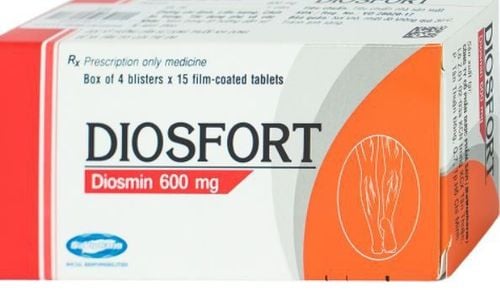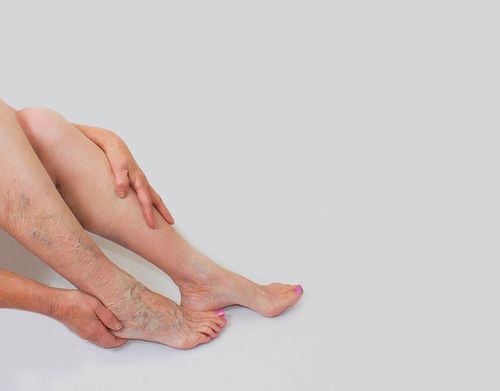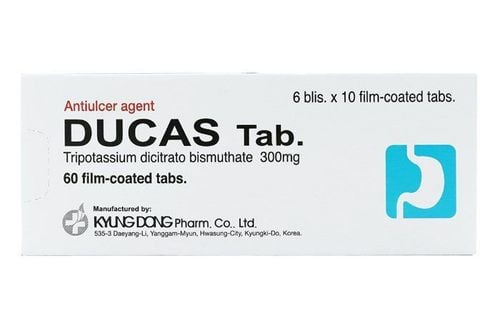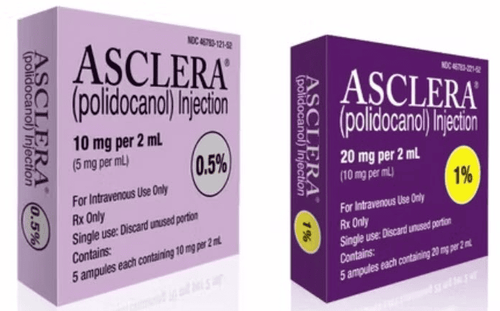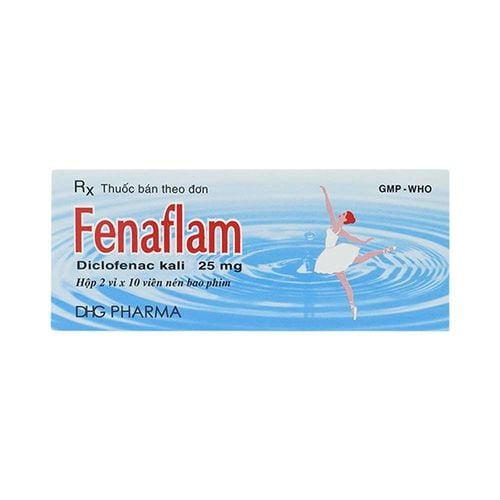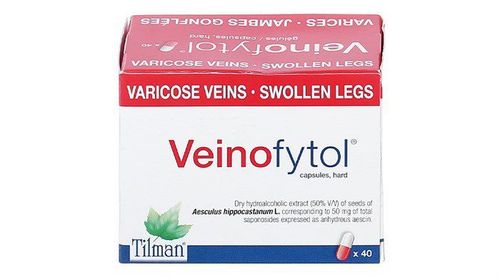This is an automatically translated article.
Posted by Master, Doctor Mai Vien Phuong - Department of Examination & Internal Medicine - Vinmec Central Park International General Hospital
Abbreviation
Upper Gastrointestinal Bleeding (UGIB)
Varicose Vein Upper Gastrointestinal Bleeding (NVUGIB)
Varicose Vein Upper Gastrointestinal Bleeding (VUGIB)
Upper gastrointestinal bleeding is defined as bleeding originating from the esophagus to the ligament of Treitz of the duodenum and is classified into gastrointestinal bleeding not due to ruptured varices and bleeding due to ruptured varices.
1. Frequency of upper gastrointestinal bleeding and current means of hemostasis
Upper gastrointestinal bleeding due to varicose veins remains a common clinical problem globally. It is associated with high mortality, morbidity and costs of the health care system. Despite the continued improvement of therapeutic endoscopy, the 30-day rate of recurrent bleeding and associated mortality is an ongoing problem.
The Food and Drug Administration currently has approved conventional or conventional therapeutic endoscopic modalities including epinephrine injection, argon coagulation, heating probes, and OTSC bronchoscope clamps, with may be used alone or in combination to reduce the risk of bleeding.
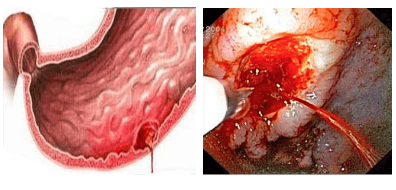
2.New endoscopic means of hemostasis
Recently, new advanced endoscopic devices have received more attention for the initial treatment of bleeding lesions and as an adjunct when conventional therapies fail to achieve hemostasis. This review highlights emerging endoscopic modalities used in the management of upper gastrointestinal bleeding from ruptured varicose veins such as over-the-scope clip (OTSC), Coagrasper, hemostatic spray, and excision. Radiofrequency ablation, cryotherapy, endoscopic flexible gastrointestinal suturing devices and endoscopic ultrasound therapy for arterial occlusion.
3. Causes of upper gastrointestinal bleeding not due to varicose veins
Gastrointestinal bleeding is a medical emergency that leads to significant morbidity, mortality, and healthcare costs. It may present as a life-threatening major hemorrhage or chronic silent bleeding. Upper gastrointestinal bleeding (UGIB) is defined as any gastrointestinal bleeding that originates above the ligament of Treitz. UGIB can be further classified as varicocele upper gastrointestinal bleeding (NVUGIB) and varicocele upper gastrointestinal bleeding (VUGIB). Common causes of varicose veins upper gastrointestinal bleeding are listed in Table 1. The morbidity and mortality associated with varicose veins upper gastrointestinal bleeding have decreased due to advances in the prevention and management of varicose veins upper gastrointestinal bleeding. However, it remains a common clinical problem with an annual incidence of approximately 90-108 per 100000 and a mortality rate of 3% to 14%.Table 1 Etiology of upper gastrointestinal bleeding due to varicose vein rupture.
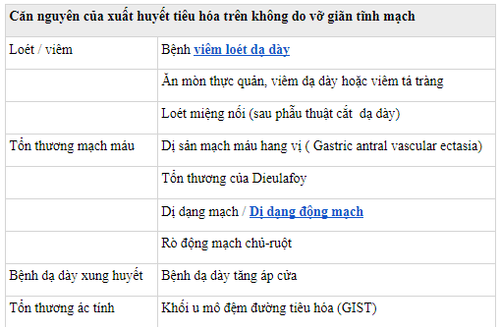
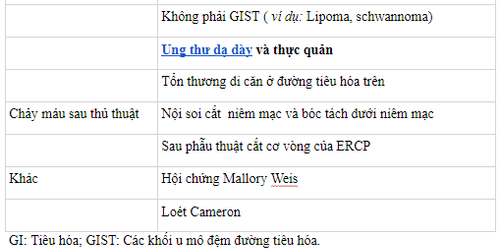
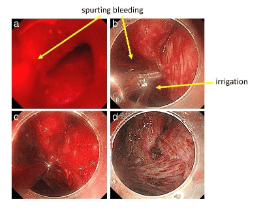
4.Heat treatment for upper gastrointestinal bleeding due to varicose veins
Coagrasper
Coagrasper (Olympus Corp., Tokyo, Japan) or hemostatic forceps is a combination of a thermal and mechanical hemostatic device to provide targeted unipolar coagulation at the precise site of bleeding. It was originally developed to prevent and treat gastrointestinal bleeding associated with minimally invasive endoscopic procedures, such as EMRs, ESDs, and resection of small gastric tumors. Three sizes of coagrasper are available with different jaw widths to allow effective hemostasis.
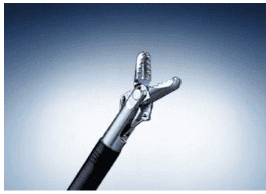
Coagrasper has several advantages over thermal coagulation and hemoclips of conventional thermal probes. Due to these unique properties, it is one of the safest and most effective methods of hemostasis. The clamp's large surface area and non-slip jaw design provide a mechanical compression effect to surrounding tissues, making it a highly effective method of hemostasis. In addition, the risk of perforation is extremely low because coagrasper operates at a lower voltage than other heat treatments coagulating tissues without any carbonization and without extending to deeper tissue. Clamps that can be used to treat multiple bleeding sites have proven to be cost-effective.
Efficacy of Coagrasper versus hemoclip
A recent prospective randomized trial by Toka B and co-authors compared the effectiveness of hemoclip (n = 56) with hemoclip ( n = 56 ) for upper gastrointestinal bleeding due to varicose veins. The study reported initial success rates in more than 98% of patients treated with coagrasper compared with 80% in the hemoclip group.
The rate of re-bleeding was lower in the coagrasper group with no adverse effects. Shorter hospitalization and endoscopic time in patients treated with coagrasper have been reported. Another randomized controlled trial comparing the effects of soft mode coagulation and thermal probe coagulation on peptic ulcer bleeding was published in 2015. A significant difference was found. was observed in achieving primary hemostasis in the coagrasper (96%) and thermal probe (67%) treatment groups. No reports of bleeding and adverse events were observed in the coagrasper group. In contrast, perforation occurred in 2 patients treated with thermal probes, which managed conservatively.
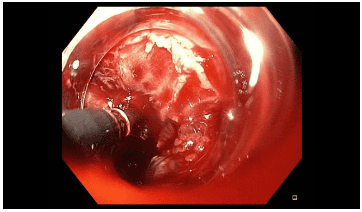
Radiofrequency ablation (RFA)
Radiofrequency ablation (RFA) is mainly used to treat Barrett's esophagus; however, it is a novel endoscopic approach for the treatment of GAVE antral vascular dysplasia. RFA can be performed using a confocal catheter (Barrx TM HALO 90 and HALO ULTRA) or a Barrx TTS RFA catheter.
In a single open-label, central prospective study, Raza et al demonstrated 100% technical success with the HALO system and 67% clinical success in 9 patients after an 11-month follow-up period. . Further studies confirmed similar results of technical and clinical success with postprocedural hemoglobin improvement without major adverse events observed. Despite promising results, the studies did not offer a randomized design and had a short follow-up period. A multicenter, open-label retrospective case series showed a significant increase in hemoglobin after the procedure with the HALO system, as well as a decrease in blood transfusion in 24 patients. There are limited studies examining the use of RFA in other cases of gastrointestinal-related bleeding.
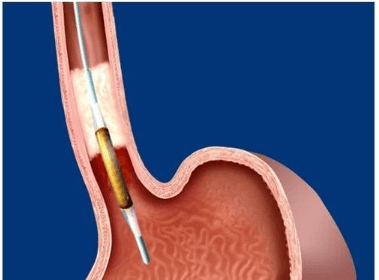
Cryotherapy
Cryotherapy has been suggested as a useful hemostatic modality by inducing cell necrosis through local freezing of a large surface area of tissue. Cho et al demonstrated 50% of patients achieved a complete response, while the other half achieved a partial response in bleeding associated with antral antral vascular dysplasia (GAVE). There was a decrease in the amount of blood to be transfused after the procedure and an increase in hemoglobin was observed. No immediate complications were observed. However, this was a small single trial study with a short follow-up period. The number of treatments and the type of cryogen should be determined.
Endoscopic laser coagulation
Endoscopic laser coagulation is another non-contact thermal method of hemostasis. The Nd:YAG laser is directed through the channel of the endoscope with the tip positioned 5 to 10mm from the ulcer and the beam directed at the site of bleeding. Although ND:YAG laser therapy has been shown to be effective, it is not routinely used in the treatment of non-varicose gastrointestinal bleeding. This is due to the technical limitations of the technique, the large size of the laser delivery unit, the special power and water supply requirements, and the least cost-effectiveness compared to other methods.
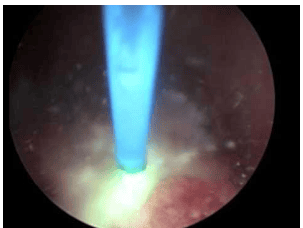
Conclusion
Upper gastrointestinal bleeding from varicose veins continues to be a persistent challenge despite advances in both pharmacological and endoscopic techniques. Several new modalities as well as modifications to traditional treatment modalities have clearly shown promise in improving outcomes whether used as monotherapy, adjuvant therapy or therapy. rescue for the management of upper gastrointestinal bleeding due to varicose veins. Because of the wide range of causes of varicose veins in the upper gastrointestinal tract, the indications, efficacy, and safety of emerging endoscopic techniques continue to be determined. Additional studies are warranted to better define the role of these modalities in the treatment of varicocele upper GI bleeding and to determine the optimal treatment modality for the disease. Treatment of upper gastrointestinal bleeding due to specific varicose veins
Vinmec is equipped with the most modern digestive endoscope system of Olympus, one of the best brands today. In which, there are machines being used for treatment such as the Olympus CLV 190 endoscope, two HQ190 and H190 gastroscopes, two HQ190 colonoscopes. The advantage of endoscopes is that they have narrow light spectrum (NBI), and NBI endoscopic images have high resolution and contrast, making it easier to detect, screen and diagnose gastrointestinal cancers at an early stage. early segment.
Not only that, to ensure sterility, the hospital endoscopes are also equipped with an automatic endoscope washing machine and RO water filtration system.
Diverse services, fully meeting the examination and treatment needs of customers Gastroscopy, emergency esophagitis with high gastrointestinal bleeding Interventional endoscopy - cutting 1 gastrointestinal polyp < 1cm Interventional endoscopy - gastrointestinal polyp removal > 1cm or more polyps Narrow band esophagogastroduodenal endoscopy (NBI) Narrow band complete colonoscopy (NBI) C13 breathing test for Helicobacter pylori General Hospital Vinmec International is one of the leading hospitals in the country in terms of examination, diagnosis and treatment of digestive diseases. For effective examination, consultation and treatment, customers can contact Vinmec Health System nationwide or register online on the Website for the best service.
With nearly 10 years of experience in the field of Gastrointestinal Endoscopy, Master, Doctor Mai Vien Phuong has successfully performed many complicated endoscopic interventions, detecting many digestive cancer lesions at an advanced stage. early, bringing health and peace of mind to many patients.
Please dial HOTLINE for more information or register for an appointment HERE. Download MyVinmec app to make appointments faster and to manage your bookings easily.





